Ready to Talk About It: Remembering Michael
February 12, 2023
On Oct. 10, 2018, Hurricane Michael, a Category 5 storm, struck the Florida Panhandle, clocking in at 164 mph. This speed was calculated later, because the gusts broke all of the equipment used to measure it.
I had turned 19 two days prior. At the time, I was attending Coast State College and working a pizza delivery job. I was sleeping on my friend’s floor, as my family had moved to New England several months earlier. I called out from delivering pizzas the day before and evacuated north to Defuniak Springs. My friend’s family had decided to stay at their home in Panama City. There was a 1-day notice of the upgrade from a Category 2. On Oct. 8, Many locals were downplaying what would come to be, with many getting the Florida staple: a package of water bottles and some ramen.
I wasn’t present for the initial landfall. However, even in Defuniak Springs, the wind sounded like a looming freight train. I kept track online until communications went out. From there on, it would be an hour or two until the emergency radio station was on air; it was a total media blackout. My friend gave me an axe to take back with me, and I headed back into the city. The moonlight was the only thing illuminating the roads, which were completely blocked by trees, power poles and debris in certain portions. After some navigating, I heard the loudest silence in a city usually teeming with life. It was in complete shambles.
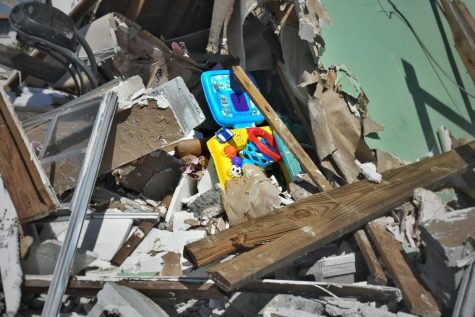
My friend’s house received minimal damage, and I was able to stay there and assist in the coming recovery effort. There was no water, power or communications with the outside for the first two weeks. The first thought was to visit our local church, thinking people would be gathering there. On the first day after the storm, it was almost totally destroyed and completely empty. We drove out to the edge of the county and found a single bar of service that was the key to everything we would do afterwards. With no radio, TV, internet or calls and texts, we would spend our time at the checkpoint on Facebook fielding wellness-checks, donation distributions and critical information about resources and current events to share with the rest of the community.
We developed a system of lining up at the gas station at the edge of the county in the morning while there was still gas; the line was usually at least an hour long. Then, we would go to the church, where a makeshift recovery effort had formed and either deliver donated food and water or pick it up to distribute throughout the city while we were doing our wellness checks. Often, we would arrive at an empty destroyed home, left speculating about what happened to the resident that didn’t evacuate.
With school and work both damaged and/or destroyed, we didn’t have much to do other than to try and help all those around us.
Frequently, the roads were still completely impassible, which would lead to us either clearing them ourselves or driving through yards and drainage ditches. Locals were struggling and standoffish in the aftermath, often openly carrying and posting signs on trees reading, “You loot, we shoot.” Fires and the sound of gunfire were frequent in the coming months. There were huge crowds at FEMA distribution points and only two operating radio stations.
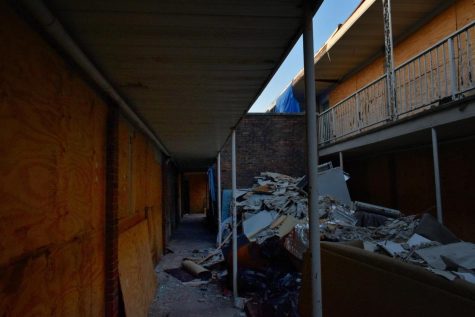
There was a population of “walking zombies” as known by locals. There were a lot of people in the city that had lost everything, and with no easy access to food or water and no communication with the outside world, they just started aimlessly walking.
Eventually, a large Christian organization known as Operation Blessing took over the recovery operations at the church. They were reluctant to go into Callaway, Springfield or Parker, areas of the city that were predominantly low-income and perceived as “dangerous.” This led to us self-coordinating our efforts through Megghan McDougall, a local activist who was very involved in the rebuilding.
The people I met in the fallout of Michael completely changed my worldview. One family I met was holding an extremely thin and frail infant. They all only spoke Spanish, except for their 13-year old daughter, who could speak broken English and didn’t know where to find water or food. They were on their last water bottle when we arrived. The emergency broadcast station only broadcasted in English.
I still get emotional because of one elderly woman I met in a trailer park near Callaway. Many of her neighbors’ homes were severely damaged, and she had taken in all the neighborhood children and given them all her blankets and warm clothes. We were in the middle of December, and the neighborhood was still without water or power. She was very ill and cried onto my shoulder during a donation run, saying she felt bad accepting help from anyone because she spent her entire life caring for others. In the middle of that night, we dropped off a huge supply of donations, including a space heater and our own personal rations, to her home.
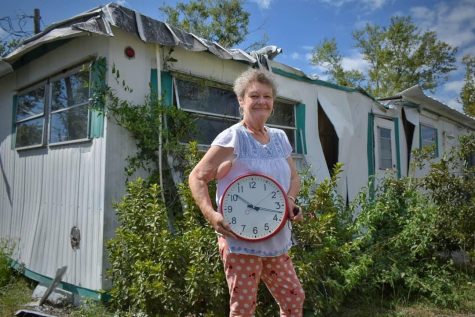
One of my friends assisting in the recovery was part of the Sea Cadets program and contacted the program’s leader, who said we could distribute their stock of MREs which were stored in a building downtown. A man who was monitoring the property found us as we were trying to enter and informed us that homeless people had been occupying the structure and placed tacks on the floors and shards of glass in the walls. We were able to retrieve them after navigating the flooded building and get the boxes out through an open window on the third floor.
An abandoned motel in the city became home to dozens of families whose homes had been destroyed in the aftermath. When we provided food and water, there were no sanitation services available, and they were throwing their trash and buckets of excrement into the courtyards and common areas of the hotel. There was no power, and they did not have communications with the outside world for months afterwards. Children were playing in the debris and trash piles.
In some of the city’s low-income housing communities, the scene was abysmal. Many were suffering due to unmet medical needs and lacked food or water in any capacity. With the power still out months after the storm, they relied primarily on the generators of a handful of residents, if they could find fuel. Around the time we were doing donation runs to these communities, former president Donald Trump and then-governor Rick Scott had arrived. My friends and I were primarily offended by the photos coming out of Trump throwing paper towels into the crowd and got the general sentiment that they were playing lip service to the community and would not actually help us.
This premonition would end up being true. I left for Air Force basic and tech school training in February of the next year. I arrived back to the city a year later, and found that tent-cities of locals who had previously not been homeless were in abundance; authorities tried to shut it down, but it highlighted underlying issues. Most people work in the tourism industry (around 70% of the city are renters). This offered a unique opportunity for land speculators and local landowners opposed to the pre-existing public housing to move in and prevent the 20,000 displaced from returning.
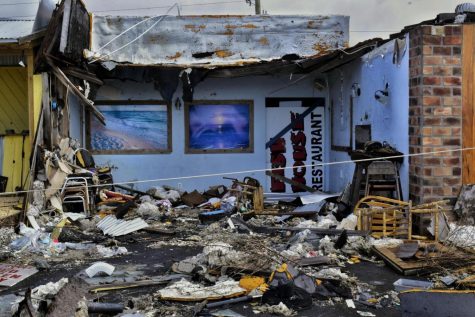
I did not feel as bad when I was in the forefront of the recovery effort, when I first saw a corpse, as I did when I returned a year and a half later to see that the situation had only gotten worse and some locals still did not have power or water. It highlighted the economic imbalances of these kinds of fallouts. Had we been Miami or Clearwater or another community with high incomes, our city would have been rebuilt within months. However, the population of Bay County decreased by 15,000 between 2018 and 2019. Even today, the scars still linger. A short drive though the area will be evidenced by abandoned buildings in disrepair and tarps on rooftops.
Luxury condominiums are being built in abundance in the area while the population of working homeless grows. The public housing still has not been rebuilt and sits in the skeletons of what once was. The thought that climate change will only increase the number of similar events and that more communities will have to go through what we did in Panama City haunts me.
When I returned in 2019, I became dedicated to documenting the fallout, which you can see in the photos distributed throughout this article. We need to address these issues now, or there’s a guarantee this will happen again. People are dead and homeless because of something we could have prepared for.
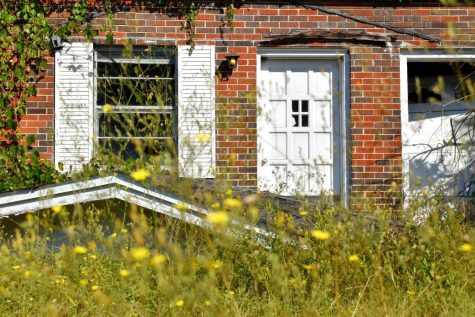
Roof of a destroyed home sits in front of its original structure in Panama City, Florida (2019).

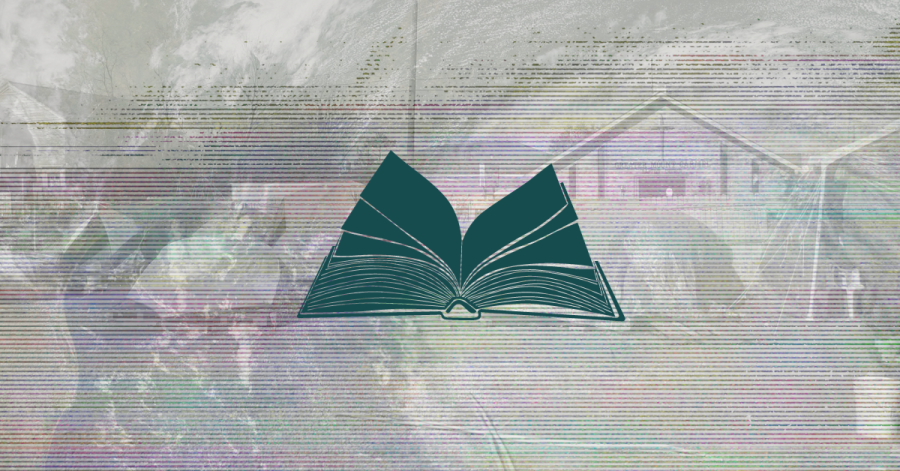
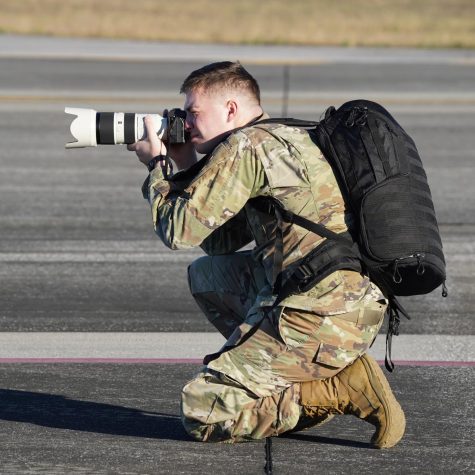
Griffin • Feb 12, 2023 at 9:32 pm
This is real my true, the Florida government ignored us!!!